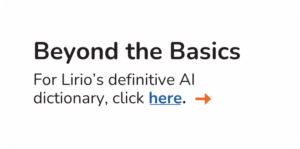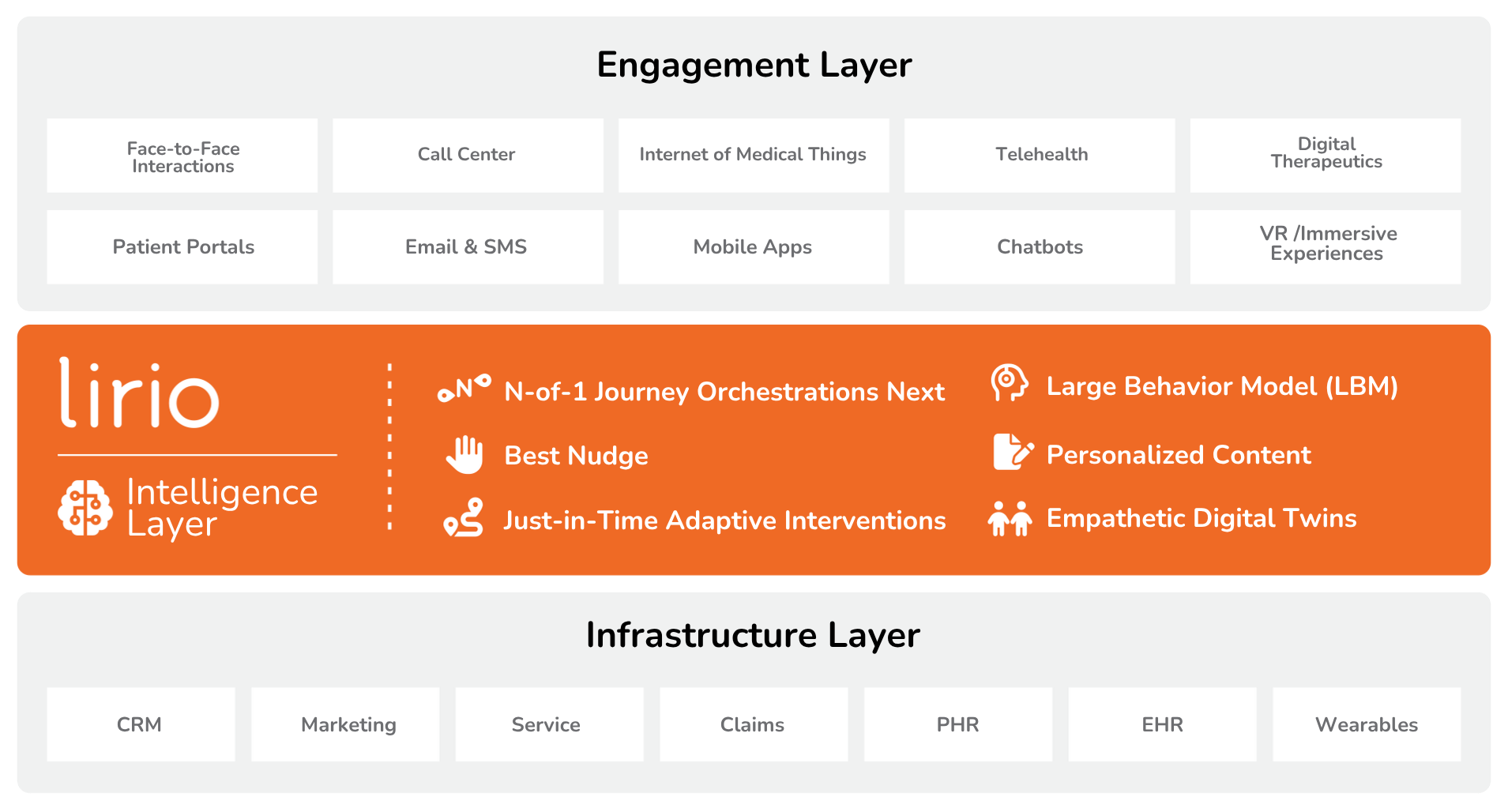Everyone–and every organization’s—definition of patient personalization is different. That’s exactly why it’s important to put a framework around “deep” personalization versus generic.
Health system marketing teams and health plans are already doing important work to personalize outreach—whether it’s sending tailored emails to prompt preventive care like mammograms or mailing benefit information about programs like menopause management based on age and gender.
But there’s a growing opportunity to take that personalization to the next level. With the right tools, marketers can move beyond broad segments to N-of-1 personalization—engaging each individual with the right message, at the right time, in the right way.
That’s where Lirio comes in—empowering marketing teams with AI and behavioral science to drive deeper, more effective engagement at scale.
For all the talk across the healthcare ecosystem about Big Data, N-of-1 is, in its simplest form, “Small Data.” Progress toward adoption has already been made by life sciences organizations embracing precision medicine, and now this N-of-1 “Small Data” has major potential to influence the “big picture” for patients and members via a scalable model that uses AI united with behavioral science. The N-of-1 outreach that prompts engagement can be truly customized per-person based on their social, cultural, physical motivations—and much more.
What is N-of-1 personalization?
Understanding unique behaviors tied to a scalable model delivers better outcomes
Terms like “personalization” and “hyper-personalization” are often used by health plans and providers, but are rarely defined — making such verbiage as generic as the batch-send emails and text messages that members and patients typically receive. To drive immediate and long-term impacts, plans and providers need to understand each member’s unique needs and motivations. But how? The answer lies in uniting AI and behavioral science — the study of cognitive, social, and environmental drivers and barriers that influence health-related behaviors.
Defining deep personalization

Incorporation of how patient demographics, preferences, health history, and behavioral patterns influence experience

Taking into consideration the timing, frequency, and modality of communications depending on member preferences and historical interaction patterns

By compiling communications for each recipient to reflect data for elements such as name and provider, but also to include specific content selected to support demonstrated needs

Incorporation of next-best actions selected from a list of potential behaviors based on the patient’s likelihood of completing them and the importance of behaviors to outcomes
From N-of-Many to N-of-1
 Lirio’s personalization engine for digital health combines behavioral science and AI to automate and scale unique consumer health journeys through its Precision Nudging® interventions.
Lirio’s personalization engine for digital health combines behavioral science and AI to automate and scale unique consumer health journeys through its Precision Nudging® interventions.
The knowledge accumulated from each member or patient who interacts with Lirio’s intelligence capabilities feeds into the Large Behavior Model (LBM). Unlike standard patient outreach platforms, Lirio’s Intelligence Layer uses real behavioral interactions and outcomes to continually refine key messages and images to uniquely motivate each patient.
This Intelligence Layer doesn’t replace but seamlessly optimizes current solutions like CRM, EHRs, and business applications — making it easy to integrate and work easily within tech stacks, today or tomorrow.
Lirio’s personalization engine for digital health combines behavioral science and AI to automate and scale unique consumer health journeys through its Precision Nudging® interventions.
The knowledge accumulated from each member or patient who interacts with Lirio’s intelligence capabilities feeds into the Large Behavior Model (LBM). Unlike standard patient outreach platforms, Lirio’s Intelligence Layer uses real behavioral interactions and outcomes to continually refine key messages and images to uniquely motivate each patient.
This Intelligence Layer doesn’t replace but seamlessly optimizes current solutions like CRM, EHRs, and business applications — making it easy to integrate and work easily within tech stacks, today or tomorrow.
In a new market report, more than half of health plan leaders say that solutions that integrate with their data infrastructure, engagement channels, and workflows would be “very impactful” in driving better member engagement outcomes.

(Click image to enlarge)
Learn how to close the behavioral gap in precision health
Don't miss your chance to sign up for early access to the health system market report here.

